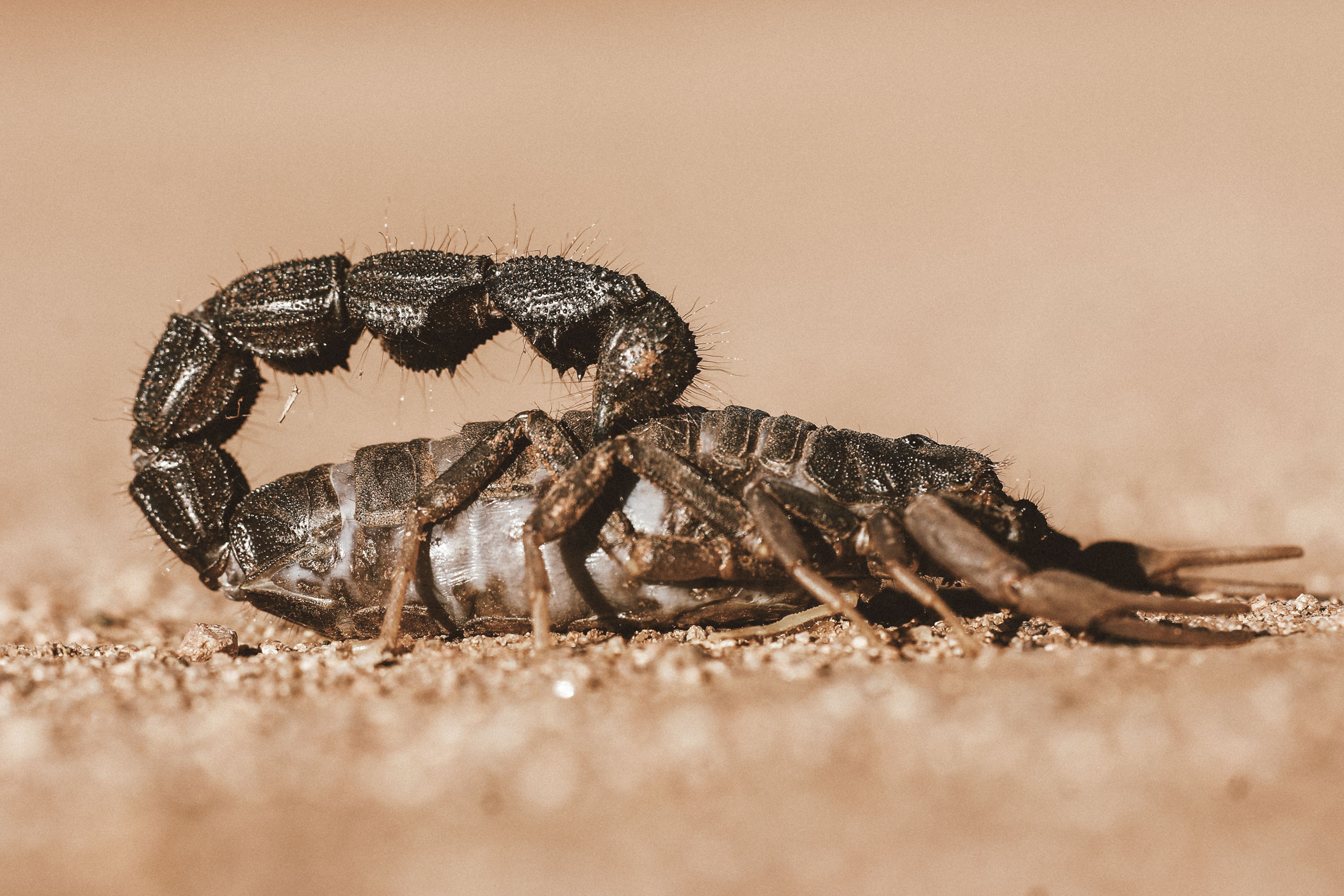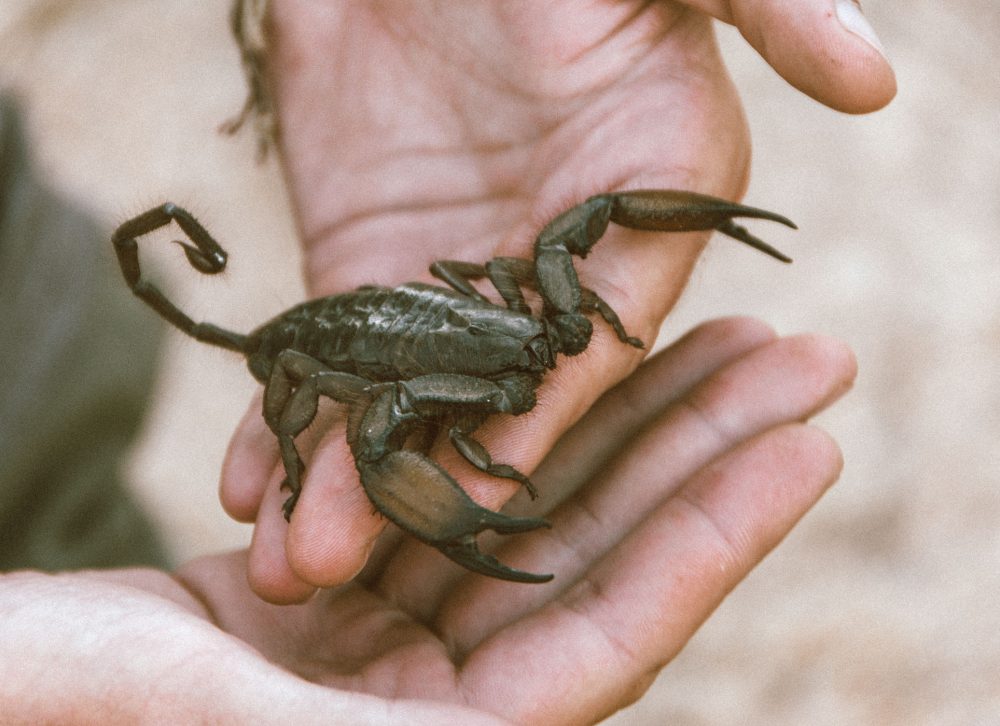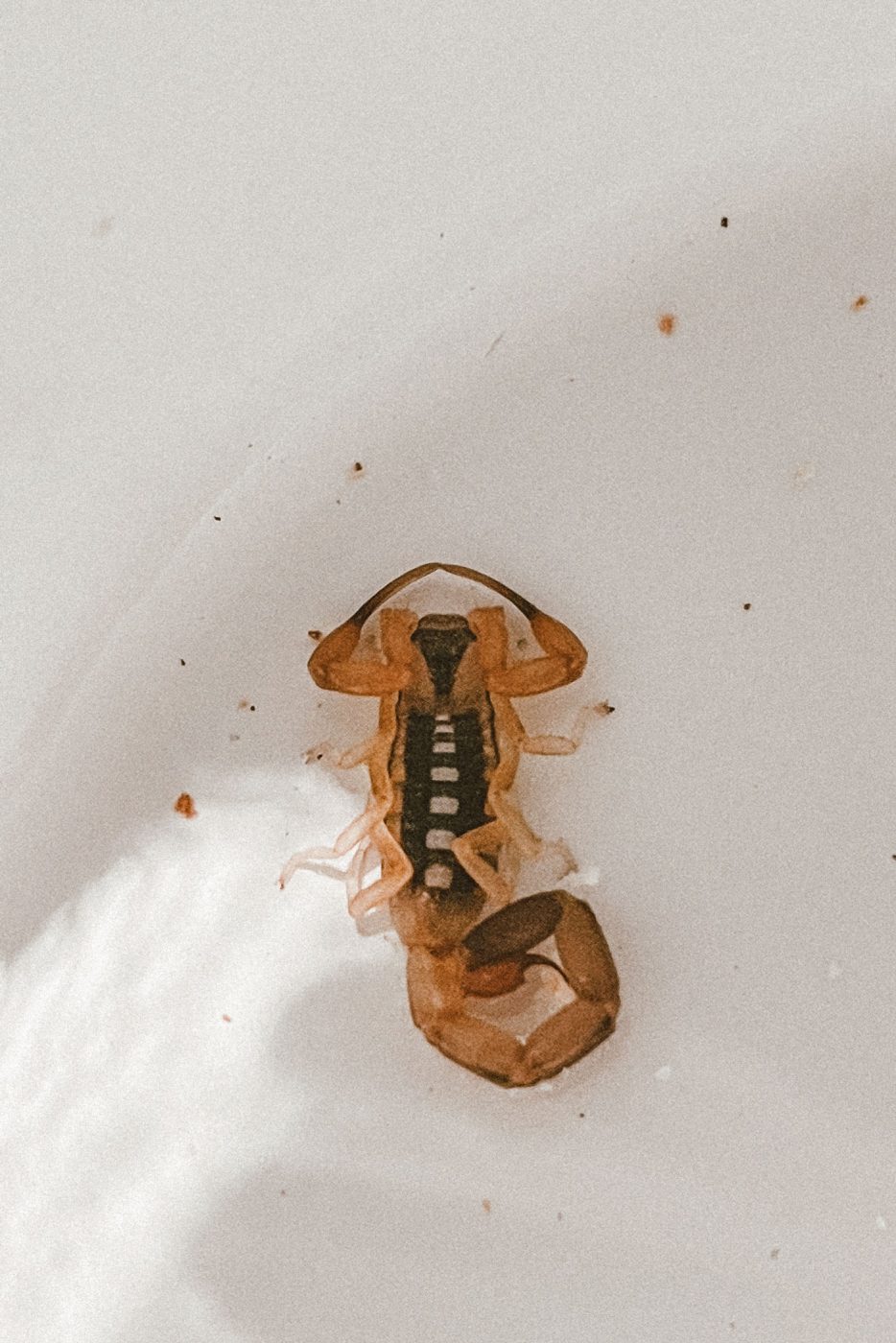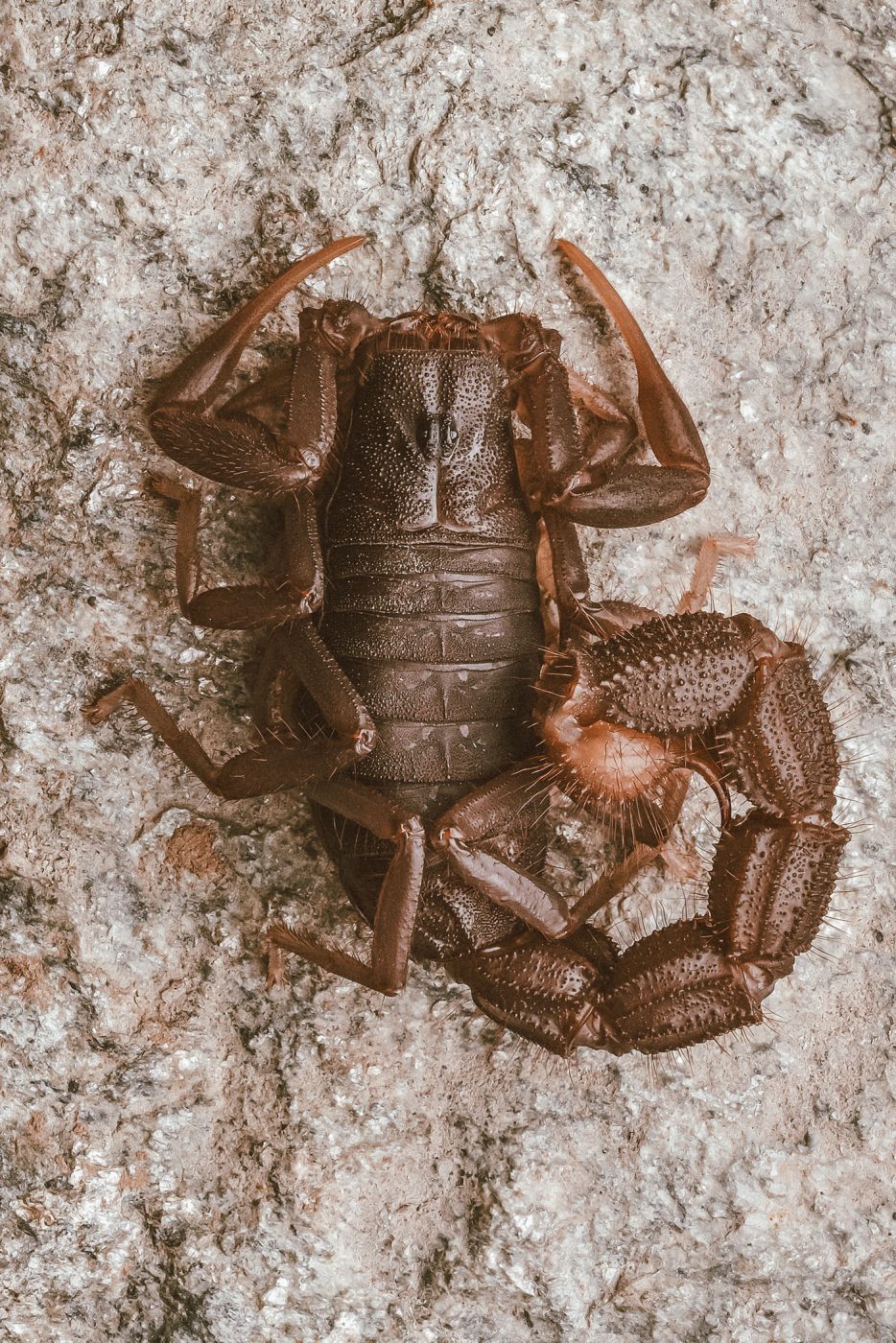Scorpions.
(order Scorpiones, from Greek skorpíos and ultimately from the ancient word *sker- ,to shear‘)Images: Claudia Fakler, unsplash, Wikimedia Commons
The order Scorpiones, commonly known as scorpions, is a group of predatory arachnids within the class Arachnida, which also includes spiders, mites, and ticks. Scorpions are characterized by their grasping pedipalps (pincers) and a venomous telson (stinger) at the end of their segmented tail (metasoma).
Key features
class Arachnida
Legs
Arachnids have four pairs of walking legs (eight legs total), unlike insects, which have three pairs.
Body Segments
Their bodies are divided into two main parts — the cephalothorax (a fused head and thorax) and the abdomen.
No Wings / Antennae
Unlike many other arthropods, arachnids lack wings and antennae.
Eyes
Most arachnids possess eight simple eyes, though some species have fewer or even rely on other senses.
Mouthparts
Chelicerae: are jaw-like structures; in spiders they are modified into venom-injecting fangs.
Pedipalps: are lateral to the chelicerae and anterior to the first pair of walking legs and are used for sensing, feeding, or reproduction; in scorpions, they form large pincers for grasping prey.
Key features
order Scorpiones
Feeding Behaviour
As ambush predators, Scorpions rely on stealth and nocturnal activity to hunt efficiently, avoiding daytime heat. They use vibration-sensitive hairs to detect approaching prey – insects, spiders, and even small vertebrates. Their neurotoxic venom delivered through the telson (stinger) immobilizes prey. The venom contains digestive enzymes that begin breaking down tissues externally, allowing them to consume liquefied prey. They use their chelicerae to tear and ingest the softened material.
A low metabolism rate allows survival on minimal food. Some species eat just 3 – 5 times a year!
Breeding Behaviour
Courtship Rituals involve a dance called a „promenade à deux“. The male will grab the female’s pincers leading her to a suitable spot to deposit his sperm packet, which she will then absorb into her body.
They boast one of the longest gestation periods among arthropods (~8–12 months). This results from their slow metabolism and ovoviviparous reproduction: eggs hatch internally, and mothers give birth to live young. Unlike true viviparity, embryos rely on yolk sacs and don’t have placental connection. After birth, the mother carries her scorplings on her back until their first molt (~1–3 weeks).

Transvaal Thicktail Scorpion (Parabuthus Transvaalicus)
01. Thintail scorpions
(fam. Scorpionidae and fam. Hormuridae)
Scorpionidae and Hormuridae are both families known for their slender tails (metasomas) and broad, powerful pincers (pedipalps). These scorpions, also called „thintail scorpions“, rely more on their strong claws adapted for capturing and crushing prey rather than venom, making their stings relatively mild compared to the more dangerous species of the Buthidae family. Typically they are slow-moving and less aggressive, though they will defend themselves if provoked.
The Burrowers and Creepers are made up of three genera: Opistophthalmus (fam. Scorpionidae), as well as Opisthacanthus and Cheloctonus (fam. Hormuridae). The pain from the sting of these scorpions can be compared to that of a bee sting. They can also pinch pretty hard with their large pincers.
The Rock scorpions in the genus Hadogenes (fam. Hormuridae) are gentle giants, often exceeding 20cm in length. Their sting is barely noticeable, comparable to the thorns of an Acacia tree. If the scorpion is upset however, those pincers give a good pinch.
02. Lesser-thicktails
(fam. Buthidae, genus Uroplectes)
The genus Uroplectes are known as „Lesser-thicktails“ or bark scorpions. These are generally small scorpions of a couple of centimetres in length. They too have thick tails and small pincers and a sting from one of these may be very painful, although not life-threatening.
03. Thicktail scorpions
(fam. Buthidae, genus Parabuthus)
Scorpions of the genus Parabuthus, commonly known as „Thicktail scorpions“, are easily recognizable by their thick, powerful metasomas (tails) and relatively slender pedipalps (pincers) — a distinctive contrast to other scorpion families. As members of the Buthidae family, they are among the most medically significant scorpions due to their potent venom and unique survival adaptations:
Some species produce a hissing sound as a warning by rubbing their stinger (telson) against granulated tail segments — a rare defensive tactic in the arachnid world. Certain Parabuthus scorpions can squirt venom up to 1 meter, aiming for predators’ eyes.
Their stings are extremely painful to humans and deliver neurotoxic venom capable of causing severe systemic effects, such as muscle spasms or respiratory distress in severe cases.

Flat Rock Scorpion (Hadogenes troglodytes)
fam. Hormuridae
Harmless
With a length of up to 20 cm it is one of the world’s longest scorpions yet harmless to humans. Native to rocky outcrops its extremely flattened body allows it to squeeze into narrow crevices, avoiding predators and extreme daytime heat. Their feet are equipped with curved claws and stiff, spinelike hairs for gripping even the smoothest rocks, including the ability to hang upside down.
Remarkably long-lived (up to 25 years), this species is a master of survival, enduring months without food in its arid habitat.

Bark Scorpion (Uroplectes vittatus)
fam. Buthidae
Mildly venemous
A small to medium-sized scorpion, measuring under 6 cm when fully extended. Its body is typically a light yellow to orange, with a darker back adorned by distinctive pale-yellow stripes running along the center — a feature that gives the species its name (vittatus meaning „striped“). The face often displays a dark, V-shaped „mask“ stretching from the eyes down to the mouthparts.
This scorpion is commonly found under tree bark and emerges on warm nights to hunt. Although its sting is painful, it poses no serious medical threat to humans.

Transvaal Thicktail (Parabuthus transvaalicus)
fam. Buthidae
Highly venemous
Large species (up to 15 cm) with a dark brown body and often lighter-colored pincers. This species’ combination of aggression, rapid reproduction rate, and potent venom makes it extremely dangerous. Its thick tail stores large venom reserves, enabling multiple stings or even rare venom spraying. Unlike most scorpions, it exhibits heightened aggression when threatened.
Females demonstrate remarkable reproductive capacity, producing 30–60 live young per ovoviviparous litter. As a strictly nocturnal hunter, it avoids daytime heat entirely, emerging only under cover of darkness to forage.

Leave a Reply